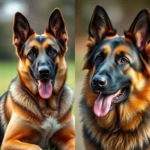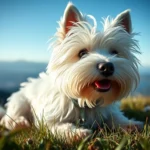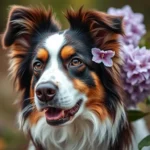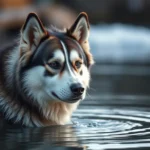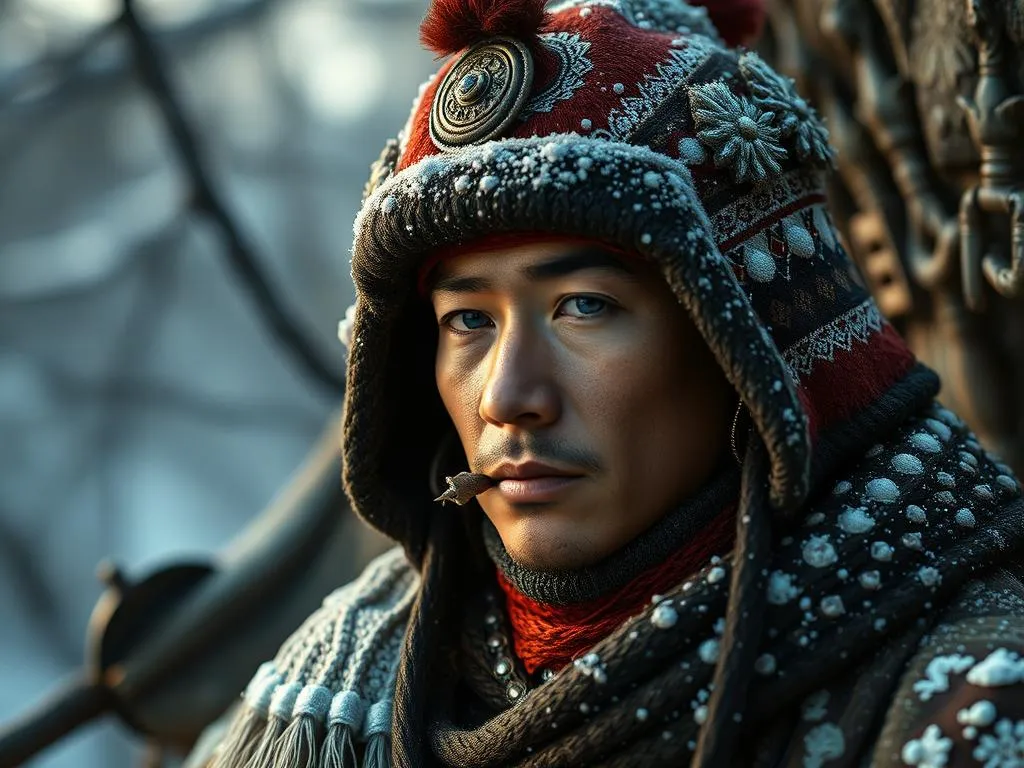
The Chusky is a fascinating crossbreed that combines the distinctive traits of the Chow Chow and the Siberian Husky. This designer dog has gained popularity in recent years, showcasing a blend of unique characteristics from both parent breeds. The allure of designer dogs, like the Chusky, stems from their distinctive appearances and temperaments, making them appealing to various dog lovers.
Understanding the Chusky
Origin and History
To appreciate the Chusky, it’s essential to understand its parent breeds.
Chow Chow: Originating from China, the Chow Chow has a rich history that dates back thousands of years. Known for its lion-like mane and distinctive blue-black tongue, this breed was initially used for guarding, hunting, and pulling carts. Chow Chows are known for their independent nature and strong loyalty to their families.
Siberian Husky: On the other hand, the Siberian Husky is a breed that hails from the Arctic regions, primarily developed by the Chukchi people for sledding and working in harsh climates. With their striking blue or multi-colored eyes and thick, double-layered coats, Huskies are renowned for their endurance and playful personalities.
Development of the Chusky: The Chusky emerged as a designer breed in the late 20th century, capitalizing on the popularity of both parent breeds. Breeders sought to create a dog that would inherit the best attributes of the Chow Chow’s loyalty and the Husky’s playful energy.
Physical Characteristics
Size and Weight: A typical Chusky stands between 20 to 24 inches tall and weighs around 40 to 65 pounds. Their size can vary depending on the traits inherited from each parent breed.
Coat and Color: The Chusky often displays a thick, fluffy coat that can come in various colors, including black, brown, cream, and gray. The coat may also feature distinct patterns, combining the solid colors of the Chow Chow with the various markings of the Husky.
Distinctive Features: The Chusky is easily recognizable by its unique blend of features from both breeds. They typically have a broad head, erect ears, and a bushy tail that curls over their back. Their expressive eyes can range from deep brown to striking blue, adding to their charming appearance.
Temperament and Behavior
General Temperament: The Chusky inherits a mix of traits from both parent breeds, resulting in a dog that is loyal, affectionate, and sometimes aloof with strangers. They are known for their playful and spirited nature, making them great companions for active families.
Energy Levels: With high energy levels, Chuskies require regular exercise to keep them happy and healthy. They enjoy engaging in play and outdoor activities, so owners must be prepared for an energetic companion.
Socialization: Early socialization is crucial for a Chusky. Introducing them to various environments, people, and other pets will help ensure they develop into well-rounded dogs. They can get along well with other pets if properly socialized from a young age.
Care and Maintenance
Nutrition
Recommended Diet: Feeding a Chusky a balanced diet is essential for their health. High-quality dog food that lists meat as the primary ingredient is recommended. Look for brands that provide a balanced mix of proteins, carbohydrates, and fats.
Feeding Schedule: It’s advisable to feed your Chusky twice a day, dividing their daily food intake into two meals. This helps maintain their energy levels and prevents overeating.
Common Dietary Issues: Some Chuskies may experience food allergies or sensitivities. Common allergens include chicken, beef, and grains. It’s crucial to monitor your dog’s reactions to certain foods and consult with a veterinarian if you notice any adverse effects.
Grooming
Coat Care: Due to their thick fur, Chuskies require regular grooming to keep their coats healthy and free from mats. Brushing them at least once a week is recommended to reduce shedding and maintain their coat’s quality.
Bathing: Bathing a Chusky should be done as needed, typically every 4 to 6 weeks, or when they become particularly dirty. Use a gentle dog shampoo to avoid irritating their skin.
Nail Trimming and Ear Care: Regular nail trimming is important to prevent discomfort and injury. Additionally, check their ears weekly for signs of infection or excessive wax buildup, cleaning them as needed.
Exercise Requirements
Daily Exercise: A Chusky needs at least 60 minutes of exercise each day. This can include walks, play sessions, or more structured activities like agility training.
Activities: Engaging activities such as hiking, running, or playing fetch can help satisfy their energetic disposition. Chuskies often enjoy water activities, so swimming can be a great option on warm days.
Signs of Insufficient Exercise: If a Chusky doesn’t get enough physical activity, they may exhibit behavioral issues such as excessive barking, digging, or chewing. It’s crucial to provide them with enough stimulation to prevent these problems.
Training a Chusky
Basic Training Techniques
Obedience Training: Teaching basic commands like sit, stay, and come is essential for a well-behaved Chusky. Consistency and positive reinforcement will yield the best results.
Socialization Training: Exposing your Chusky to various situations, environments, and people will help them become more adaptable and less fearful. Puppy classes can be an excellent way to facilitate this process.
Challenges in Training
Stubbornness: Chuskies can inherit a stubborn streak from their Chow Chow lineage. Patience and persistence are key when training them. Using positive reinforcement techniques and making training sessions fun can help motivate your dog.
Barking and Noise Control: Some Chuskies may bark excessively, especially if they are bored or not properly exercised. Identifying triggers for barking and providing ample stimulation can help mitigate this issue.
Advanced Training Options
Agility and Trick Training: Many Chuskies excel in agility training due to their intelligence and athleticism. Teaching them tricks can also be a fun way to bond with your dog and keep their minds engaged.
Professional Training Programs: If you’re struggling with training, consider enrolling your Chusky in a professional training program. Trainers can offer tailored guidance based on your dog’s specific needs.
Health Considerations
Common Health Issues
Genetic Conditions: The Chusky can be predisposed to certain health issues inherited from its parent breeds. These may include hip dysplasia, eye conditions, and skin allergies. Regular veterinary check-ups can help manage and prevent these issues.
Preventive Care: Keeping up with vaccinations, flea and tick prevention, and regular vet visits is crucial for your Chusky‘s overall health.
Lifespan and Aging
Average Lifespan: Typically, a healthy Chusky can live between 12 to 15 years. Factors such as genetics, diet, and care play a significant role in their longevity.
Signs of Aging: As your Chusky ages, you may notice changes in their energy levels, mobility, and overall demeanor. Regular vet visits can help monitor their health and address any age-related concerns.
Insurance and Costs
Health Insurance Options: Investing in pet health insurance can provide peace of mind and ease the financial burden of unexpected health issues. Researching different plans can help you find the best coverage for your Chusky.
Estimated Costs: Owning a Chusky comes with various costs, including food, grooming, veterinary care, and supplies. Expect to spend an average of $1,000 to $2,000 annually on your pet.
Chusky in Different Living Environments
Apartment Living vs. House Living
Suitability for Apartments: While a Chusky can adapt to apartment living, they require ample exercise and mental stimulation. If you live in a small space, ensure you can provide daily walks and playtime.
Yard Requirements: For those with houses, a fenced yard can be beneficial for a Chusky to run and play freely. However, they should still be taken on regular walks to explore different environments and socialize.
Family Compatibility
Good with Children: Chuskies are generally good with children, as they tend to be playful and affectionate. However, supervision is advised, especially with younger kids, to ensure safe interactions.
Compatibility with Other Pets: With proper socialization, Chuskies can coexist well with other pets. Early exposure and training will help them learn how to interact positively with other animals.
Conclusion
The Chusky is a unique and charming breed that combines the best traits of the Chow Chow and the Siberian Husky. From their stunning physical characteristics to their playful and affectionate temperament, these dogs can make excellent companions for active families.
As potential owners consider bringing a Chusky into their homes, they should be mindful of the breed’s exercise needs, grooming requirements, and health considerations. With proper care, training, and socialization, a Chusky can thrive and bring joy to any household.
